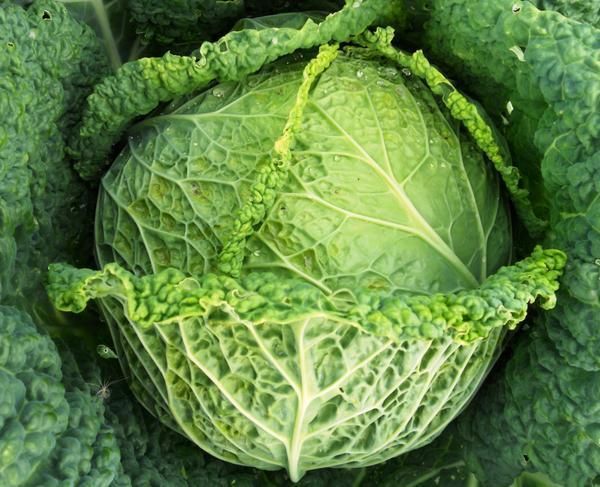Savoy cabbage was bred by Italian breeders at the end of the 18th century and became widespread in Europe in the 21st century. With proper care, its cultivation is not difficult.
Table of contents
Characteristic of savoy cabbage
This vegetable culture is a cabbage with bright green delicate, soft leaves. The heading is not dense, has no coarse streaks. Gentle and savory taste good for making salads and cutlets. Do not use for pickling and salting.
In the first year of growth on a massive stalk a small rosette weighing from 0.5 kg to 1.2 kg. The following year, the head of cabbage grows up to 3 kg, the sheets become soft. The taste becomes more pronounced.
The stem throws inflorescences with seeds, which are subsequently used to grow seedlings. With proper storage can be used as seed, up to 5 years.
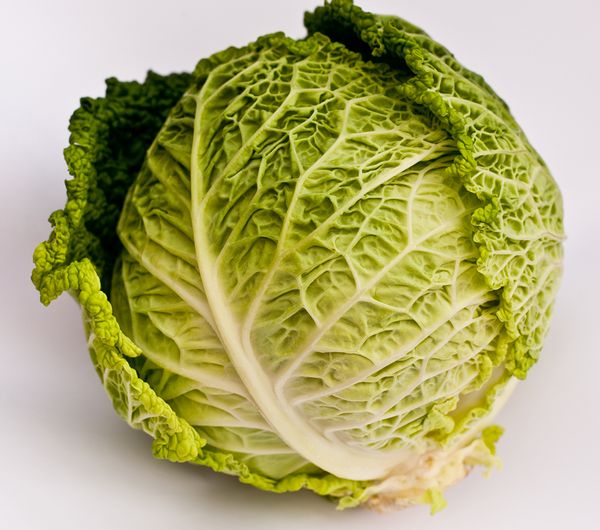
Merits
Contains:
- crude protein - 1.7–4%;
- vitamin C, 2–90 mg;
- vitamin P, 4–3 mg;
- vitamin A - 0.3–0.7 mg;
- sugar - 4-7%;
- mineral salts - 0.85%.
Savoy cabbage frost resistant, has a high resistance to diseases and the effects of pests. Easily tolerates the lack of moisture.
disadvantages
Among the disadvantages of savoy cabbage are the following:
- this vegetable can not be eaten with ulcer, gastritis, duodenal disease, thyroid disease;
- causes increased flatulence.
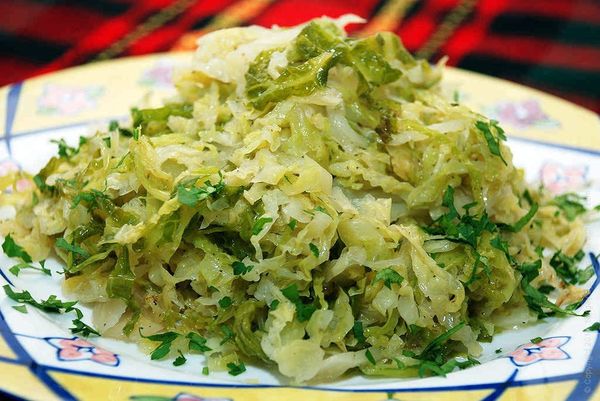
Species
Early varieties
- Anniversary 2170;
- Vienna - early 1346;
- Julius F1.
Mid-season
- Melissa F1;
- Sphere;
Late
- Verosa F1, Ovasa F1;
- Mora F1.
Seed preparation for cultivation
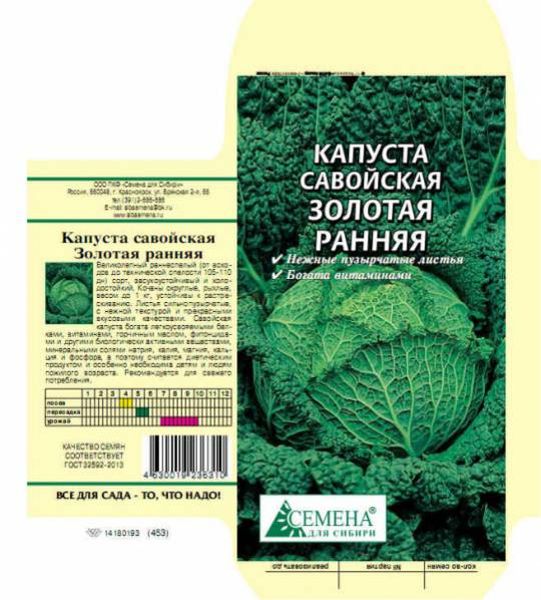
For 20 minutes they are filled with hot water (not below +60 degrees), then immersed in very cold water for 3 minutes, and then the seeds are soaked for 14 hours in a solution of microelements.
After soaking the seeds are placed in the refrigerator for a period of 22 to 24 hours. This will increase the frost resistance and seed germination will be maintained for 5 years.
Sowing
Planted seeds in the beginning of March. For planting seeds it is necessary to prepare a special soil. In wooden boxes in the same proportions mix sod land with sand and peat. The prepared soil is spilled with a weak solution of manganese.
It is not recommended to use garden soil to grow cabbage. There may be infections that can damage crops.
Sow seeds at a distance 1 cm. Row spacing not less than 3 cmgroove depth 1 cm. Grooves covered with earth. Drawers on top covered with film or glass.
It is necessary to maintain the temperature in the room not below 18 degrees. Before the appearance of the first shoots of the earth should be well watered. After the emergence of the seedlings, open the drawers and reduce the temperature in the room to 15 degrees during the day and 8 degrees at night.
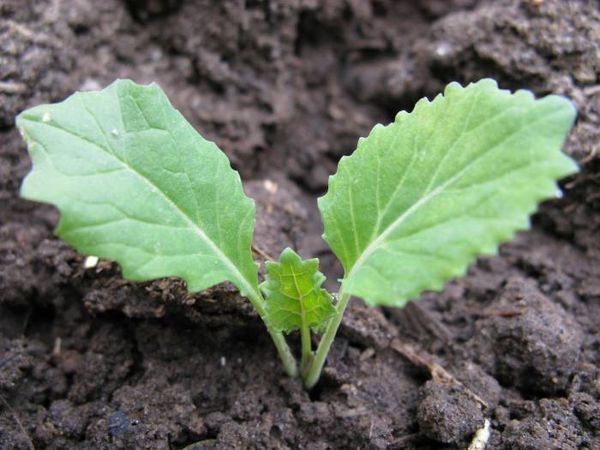
On day 7, thinning should be done so that the distance between the sprouts is 2 cm. In order for the seedlings to grow strong, it needs a large amount of light. In the light of seedlings should be at least 14 hours. To do this, you can use an ultraviolet lamp.
Water should be slightly warm. After watering, you need to loosen the ground so that there is no stagnation of water. After 2 weeks, the seedlings should dive. Shorten 1/3 roots and transplanted into peat cups.
Feeding seedlings
Initially, fertilizing should be done, when two leaflets appear on the seedlings. The solution is prepared as follows:
- water - 1 liter;
- complex fertilizer - 0.5 tsp.
Spray the leaves with this solution. After two weeks of feeding again.
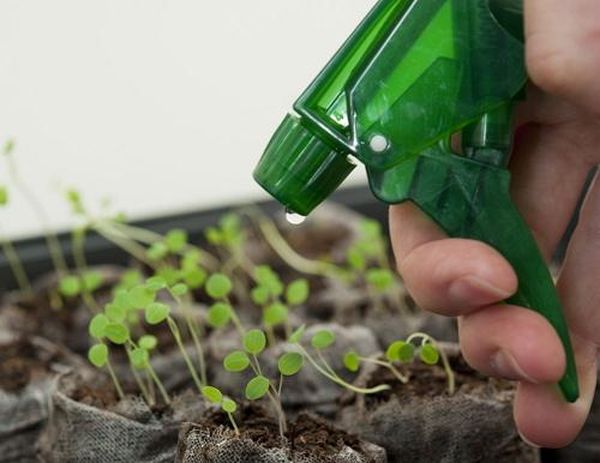
For feeding you need:
- water - 1 liter;
- superphosphate - 4 grams;
- nitrate - 3-4 grams;
- potash fertilizers - 4–5 grams.
Hardening
14 days before disembarking seedlings in the soil must be hardened. Hardening is performed as follows:
- On the first and second day we open the window for 4–6 hours;
- For 8 days, plant seedlings on a loggia or a glazed veranda, shading from sun on a light day. At night, seedlings must be brought into the room;
- 4 days before transplanting, seedlings can be left on the loggia for 24 hours.
7 days prior to disembarkation stop watering. 2 hours before disembarking the seedlings should be watered abundantly.

Soil preparation
The soil for the growth of cabbage prepare from autumn. It is necessary to first perform a deep digging and wait until weed rises. After destroying the weeds, make a liming and dig the site a second time.
In the spring, a mullein or rotted compost is applied to the soil at the rate of 3–4 kilograms per 1 square meter. meter, 35–40 grams of mineral fertilizer, 150–200 grams of wood ash and dig beds 20 cm deep.
Transplanting seedlings in open ground
Transplantation in open ground perform:
- When the seedlings will be 5-6 sheets.
- Transplantation is carried out in the evening;
- Seedling height from 18 to 20 cm;
- A well-developed root system;
- The color of the seedlings is bright green.
Seedlings planted at intervals in a row 35–40 cm. Row spacing 45–50 cm. Groove well shed water. In depth, the groove should be identical to the size of the pot in which the seedlings previously grew. Ground up seedlings before the first leaflet.

Suitable for growing cabbage well-lit plot of land, where cucumber, onions, tomatoes, and potatoes were previously grown.
7 days after transplanting you must complete loosening to a depth of 7 cm. Subsequent loosening is performed every week to a depth of 15 cm. Hilling should be performed 30 days after transplantation.
Re-hilling is performed when the leaves begin to close.In the process of growth, the cabbage must be fed with a solution of cow manure or fertilizer. To protect the cabbage from insects, it is recommended to sprinkle it with ashes.
Pests
Savoy cabbage pests include:
- cruciferous flea;
- spring cabbage fly;
- scoops and moths;
- bed bugs;
- aphid;
- wireworm;
- slugs.

Disease and Prevention
The most common diseases are:
- blackleg;
- mosaic;
- powdery mildew;
- bel;
- fomoz;
- black spot.
With the disease mosaic and black spot It is necessary to remove the diseased specimen from the garden and shed the soil with a steep solution of potassium permanganate. With the disease fungus Cabbage should be treated with copper sulphate or Bordeaux mixture.
Cleaning and storage
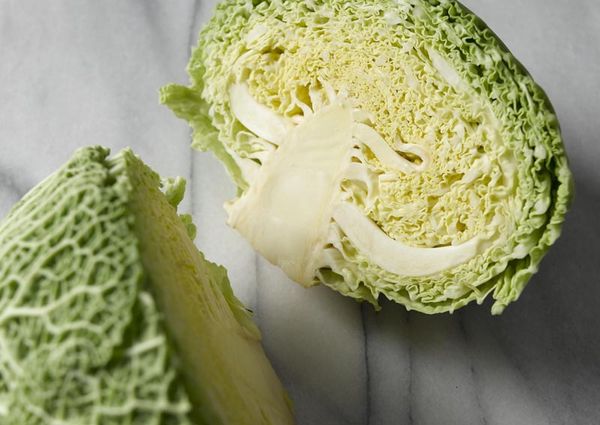
Use early varieties for making salads, make patties, cabbage rolls. Early varieties do not store.
Late variety is harvested at the end of October. For storage leave the heads of cabbage weighing 500 grams. The leg is shortened, 3 top leaves are left on the head.The cut cabbages are poured with crushed chalk and spread in a dry room on racks for 2–3 days. After that, the cabbages are hung individually in a grid under the ceiling or placed in boxes so that the cabbages do not come into contact with each other. The temperature in the room should be from 0 to +3 degrees. Humidity up to 95%. To extend the shelf life is required tempera from -1 to -3 degrees.
Observing such simple rules of planting and care is not at all difficult to obtain a high yield.
